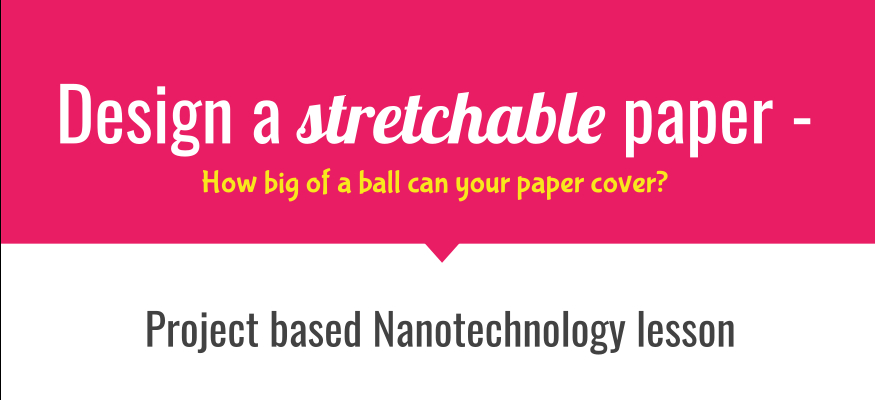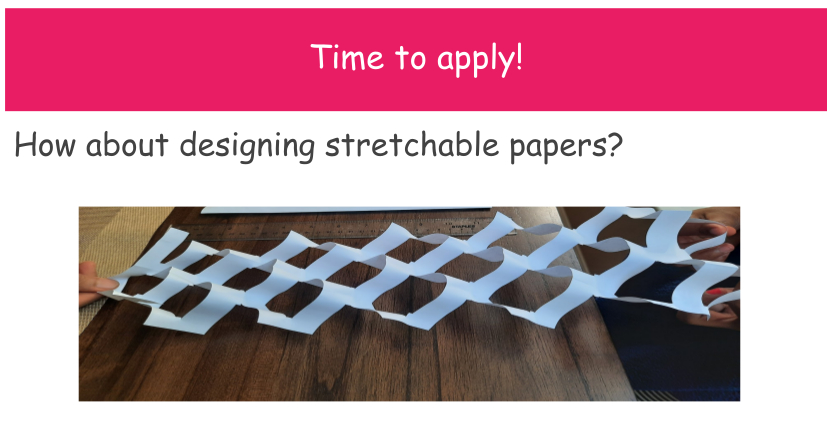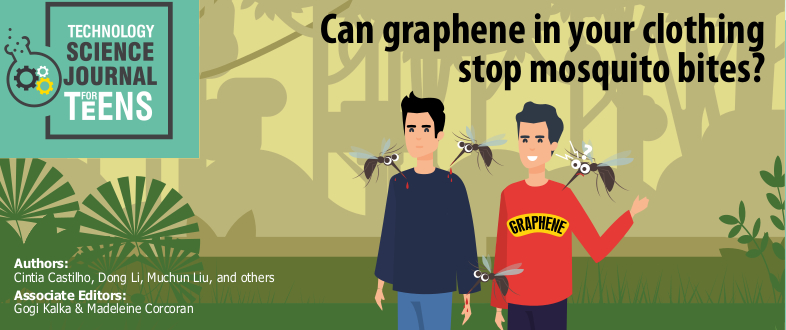
By Srividhya Sundaram
How can I connect my students with the latest scientific research in an engaging, unforgettable way? I have often wrestled with this question. While some of my attempts to bring scientific research articles into my classroom have failed, there are others that do the job nicely. In fact, a few efforts stand out! That’s what I would like to share with you: an effective way to use science articles as a tool that makes student comprehension more visible… and offers curious young minds a valuable peek into the world of research.
Getting Students Ready to Learn
To ready my students, I usually create a baseline of knowledge. For example, I recently did a brief nanotechnology lesson with my eighth grade students before introducing a scientific article (shared below) entitled “Can graphene in your clothing stop mosquito bites?” I gave a quick introduction to the article and a Google Slides mini-lesson on its essential take-aways. This anticipatory set revved up my students and helped them feel more confident as they explored the topic.
Making Scientific Research Work, In and Out of the Classroom
In this topsy-turvy time of COVID-19, educators must make every effort to keep teaching (and learning) creative, lively, and effective—both for in-person and virtual students. This year, some of my students came into the classroom, while others joined us on Zoom at the same time. The challenge was to find a way to teach both types of students so that all were equally engaged.
In an effort to get all my students on the same page, I created a Google Slides presentation on nanotechnology that served as a learning tool for both types of learners.
The slides are designed for self-driven learning. A few slides are Google forms, titled “CYU (Check Your Understanding)”. These allow me to determine if my students have understood the concepts on their own, or if I need to expand my explanations.
I found an amazing activity from the Cornell Center for Materials Research (CCMR) and have included it in my presentation with great success. Nanomaterials: how to stretch a 2-D material is a hands-on project that is both challenging and fun. Best of all, the project needs only simple, everyday materials that students can find at home.
Bring on the Scientific Research Article!
After working on their nanomaterials project, my students demonstrated a good understanding of how nanotechnology works. That’s when I finally introduced the Science Journal for Kids article: Can graphene in your clothing stop mosquito bites? This made a huge difference for my students. They quickly made meaningful connections between the classroom lesson and the research discussed in the article.
Exciting Connections with Scientific Research
Then, a ground-breaking moment happened. A typically quiet student asked me, “Is nanofabrication related to fashion design?” As I nodded yes, she expressed great excitement: “That’s what I want to do for a living! Can I research that?” How could I say no when it was her passion—and completely relevant to the lesson? I believe moments like these are what teaching is all about. This student’s excitement about nanofabrication was equal to my own excitement at seeing her want to learn more.
I was so happy to see her enthusiasm spread throughout the class, both in-person and on Zoom. Another two students asked me if they could research nano-cosmetics… and a third came inquiring about nano-dentistry! It was a contagious bug of enthrallment. A seamless connection of the topic, field research, and student passion came together.
So what does a teacher do? We react to our students. I quickly created an assignment to give students a broad structure and understanding of nanotechnology and its applications. My students embraced this project with passion, with purpose, and with perseverance!
References:
https://www.ccmr.cornell.edu/education/remote-learning-resources/lesson-plans/
Can graphene in your clothing stop mosquito bites?
Link to access the google slide presentation: https://docs.google.com/presentation/d/1bzuVNc1DYeNsN4YldiNnfm3KYkIvqFrRo7pDqAg0NHY/edit?usp=sharing
About the author:
Srividhya Sundaram is a STEM teacher for grades 6, 8, and 9 and the science department chair at the Joseph Kushner Hebrew Academy in Livingston, New Jersey. An enthusiastic educator for 15 years, she designs her learning environment to ignite, develop, and sustain creative thinking in her students. After school, she enjoys robotics and tinkering as a hobby. Sundaram has a bachelor’s degree in science and a master’s degree in educational leadership. Later, she joined NASA’s Endeavor program and was certified by NASA as STEM Teacher Leader. Sundaram won the Jerry Gottesman Award for Teaching Excellence, Professional Learning, and Community Collaboration in 2017.




